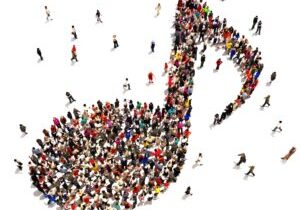This content has been archived. It may no longer be relevant
“We all have our challenges in life – physical, mental and emotional. Some are bigger, some are smaller, and some need more assistance than others to overcome.”
-GoodNet
This statement could not be more true. With this being the digital age, we have a plethora of technological tools that can help and enrich the lives of those with disabilities. According to GoodNet, there are more than a handful of mobile apps ranging from helping the blind and deaf, to people with speech disabilities and autism.
These are 7 of the best apps for people with disabilities:
1. Talkitt
Talkitt is an app that can help those with motor, speech, and language disorders. The app allows the user to use their own voice, and translates language that may be difficult to understand into speech that is understandable.
2. Be My Eyes
Be My Eyes is an app that can help those who are blind or visually impaired. The app connects users with sighted volunteers who help via video chat. Volunteers can help with tasks such as reading, or helping the user around a new area.
3. Avaz
Avaz is an app that can help those with autism, Downs syndrome, Cerebral Palsy, Angelman’s syndrome and other speech disabilities. The app allows the user to improve language skills by “speaking” using pictures and high-quality voice synthesis.
4. RogerVoice
RogerVoice is an app that can help those who are deaf or hearing impaired. The app uses voice recognition and converts voice to text. This will transcribe a phone call into a text message.
5. LOOK AT ME
LOOK AT ME is an app that can help those with autism. The app helps to improve socialization skills by turning interactions into a game. This will help the user with making eye contact, remembering faces, and expressing themselves using facial expressions.
6. HearYouNow
HearYouNow is an app that can help those with hearing difficulties (who don’t use a hearing aid). The app is supposed to help the user hear in public settings such as a restaurant or a party, but can also be used while watching TV or listening to the radio. Using headphones, the sound is controlled and amplified per ear.
7. Stepping Stones
Stepping Stones is an app that can help those with developmental disabilities, learning disabilities, auditory processing deficits, or anxiety. The app allows users to create visual guides to make sense of daily routines, helping increase independence as well as life skills.
Originally published by Jacobs Media









